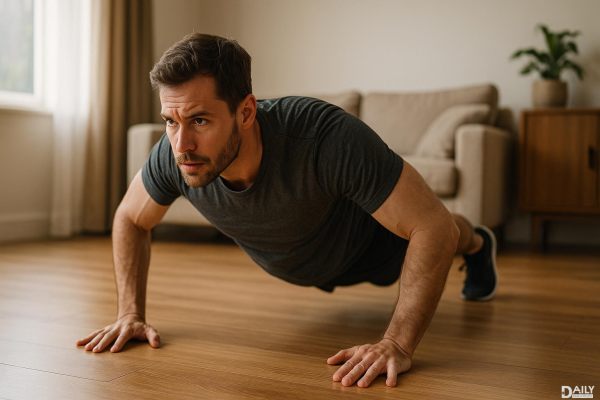If you’re wondering whether you’re doing push-ups wrong, the answer might be yes—but don’t sweat it, you’re not alone. Push-ups are one of the most fundamental exercises, yet they’re also one of the most commonly butchered. The good news? Mastering the perfect form isn’t rocket science, and once you nail it, you’ll unlock maximum gains while minimizing the risk of injury. Let’s break it down so you can stop flailing and start crushing it.

Push-ups are a full-body exercise that targets your chest, shoulders, triceps, and core. But here’s the kicker: if your form is off, you’re not just cheating yourself out of gains—you’re also setting yourself up for potential injuries. Poor form can strain your shoulders, lower back, and wrists, turning a simple exercise into a pain fest. The key to reaping the benefits lies in proper alignment, controlled movement, and engaging the right muscles. Think of it as building a house—if the foundation is shaky, the whole thing collapses.
Let’s get into the nitty-gritty of how to do a push-up the right way. Start in a high plank position with your hands slightly wider than shoulder-width apart. Your body should form a straight line from your head to your heels—no sagging hips or poking butts. Engage your core like you’re bracing for a punch, and keep your neck neutral (no craning your head up or down). Lower your body until your chest nearly touches the floor, keeping your elbows at a 45-degree angle to your torso. Push back up to the starting position, maintaining that straight line throughout. Boom—that’s the gold standard.
Even the most seasoned gym-goers can fall into bad habits. One of the biggest mistakes is letting your hips sag or hike up, which takes the load off your core and puts unnecessary strain on your lower back. Another classic error is flaring your elbows out to the sides, which can wreak havoc on your shoulders. And let’s not forget the dreaded “half-rep,” where you barely lower yourself before pushing back up. To fix these, focus on maintaining that straight line, keep your elbows tucked, and aim for a full range of motion. It’s better to do fewer reps with perfect form than to crank out a bunch of sloppy ones.
Once you’ve mastered the basics, it’s time to spice things up. If regular push-ups are still a struggle, try incline push-ups by placing your hands on a bench or step—this reduces the load and makes it easier to maintain proper form. For those who’ve got the standard push-up down pat, challenge yourself with decline push-ups (feet elevated) or diamond push-ups (hands close together to target the triceps). And if you’re feeling extra fancy, give plyometric push-ups a shot for an explosive upper-body workout. The possibilities are endless, so keep pushing your limits.
To get the most out of your push-ups, focus on quality over quantity. Slow and controlled movements are your best friend—think of it as a dance, not a race. Breathing is also crucial: inhale as you lower yourself and exhale as you push back up. And don’t forget to warm up your shoulders and wrists before diving in, especially if you’re doing a high-rep set. Lastly, incorporate push-ups into a well-rounded workout routine that includes other strength and cardio exercises for balanced fitness.
Push-ups are a timeless exercise for a reason—they’re effective, versatile, and require zero equipment. But like anything worth doing, they’re worth doing right. By mastering the perfect form, you’ll not only maximize your gains but also protect your body from unnecessary strain. So next time you hit the floor, remember: it’s not about how many you can do, but how well you can do them. Now go out there and push your limits—literally.
























